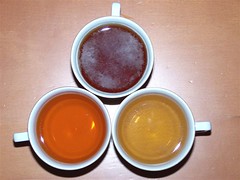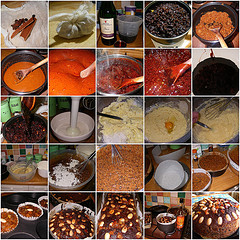As connoisseur of teas, whether real or herbal, a sample of the all natural, organic oolong tea was a refreshing change. A trip to the local coffee house gave me the opportunity to try this Asian delight. The taste was smooth with a small bitter aftertaste that can be remedied by a small splash of crème or milk. The color was a dark yellow or orange and the aroma smelled of an herbal garden in the noon day sun. It was a relaxing cup of tea without the usual overtones of fruit or spice as with some of the Celestial brews that come from Colorado. It was hearty but not with overshadowing added flavors.
Grown in China using traditional, organic methods, the Oolong Tea is becoming more and more popular in the United States. It seems that the taste and aroma is not the only reason people are drinking this powerful liquid. The health benefits of Oolong are numerous and have shown proven results in Japanese studies. The tea is a mixture of black (fermented) tea and green (non-fermented) tea. The two teas are blended together to make a wonderful combination of taste and health benefits. The green tea is shown to reduce oxidants thus reducing the risk for cancer. Cardiovascular disease is also shown in reduction with intake of the green elixir. Research has shown that consumption of Oolong tea in quantities of 4 cups a day is even seen as a control for body weight and obesity. As with any herbal product, the results are different with each individual and should not be used as a sole dietary plan. Exercise and sensible eating should also be used as part of the daily routine. [Read more…]




